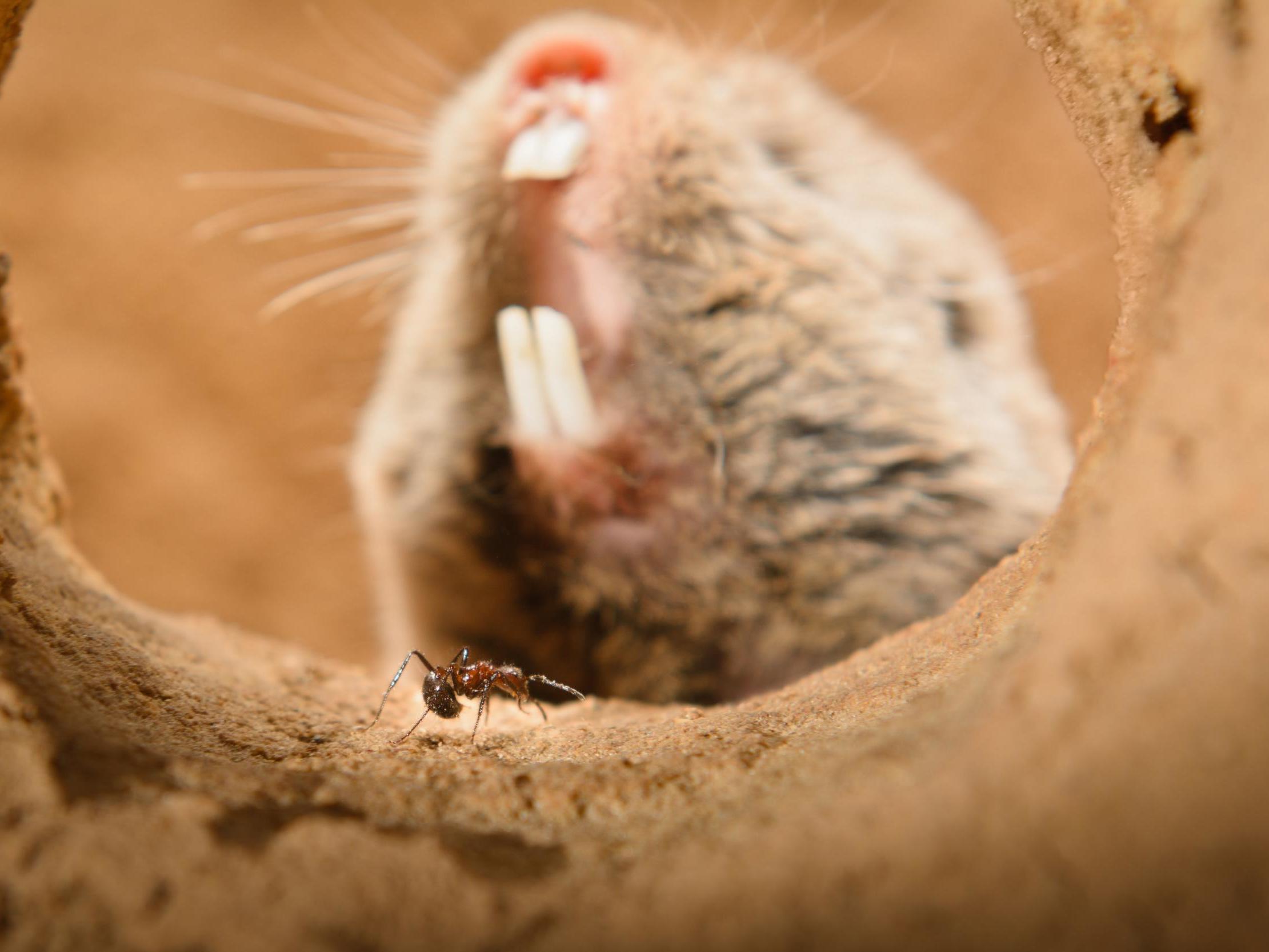African mole-rats have ‘mutant’ gene that means they don't feel pain, scientists discover
Researchers want to copy their ability to switch off genes to create more effective painkillers

Your support helps us to tell the story
From reproductive rights to climate change to Big Tech, The Independent is on the ground when the story is developing. Whether it's investigating the financials of Elon Musk's pro-Trump PAC or producing our latest documentary, 'The A Word', which shines a light on the American women fighting for reproductive rights, we know how important it is to parse out the facts from the messaging.
At such a critical moment in US history, we need reporters on the ground. Your donation allows us to keep sending journalists to speak to both sides of the story.
The Independent is trusted by Americans across the entire political spectrum. And unlike many other quality news outlets, we choose not to lock Americans out of our reporting and analysis with paywalls. We believe quality journalism should be available to everyone, paid for by those who can afford it.
Your support makes all the difference.African highveld mole-rats have "mutant" genes that mean they don’t feel pain, scientists have revealed.
Thanks to this adaptation, these remarkable burrowing rodents can happily live alongside venomous ants with painful stings and eat spicy roots that other mole-rats hate.
Scientists want to copy their ability to switch off certain genes to create more effective painkillers for people battling chronic discomfort.
Researchers from the Max Delbrück Centre for Molecular Medicine studied nine species of mole-rats and tested how they respond to substances that usually cause a brief burning sensation in mammals, according to the paper published in Science.
These substances were dilute hydrochloric acid, a chilli pepper extract called capsaicin and allyl isothiocyanate (AITC) which gives wasabi its hot taste.
They chose these substances because mole-rats are naturally exposed to them in the wild.
Three mole-rat species were insensitive to hydrochloric acid and two species did not show evidence of pain after having a capsaicin solution injected into their paw. “Others briefly lifted their paw, or licked at it, which shows us that those animals did feel a brief sensation of pain,” said Dr Lewin.
However, only one species of rat, called the highveld mole-rat from eastern South Africa, did not feel pain when it touched AITC which is found in roots and is one of the rat’s main food sources.
Lead researcher Gary Lewin described it as a “thrilling finding”.
He said: “AITC attacks amino acids in the body and can thus destroy proteins. That is why all the other species we know avoid coming into contact with the substance.”
To work out why this happens, researchers took tissue samples from all nine species and compared 7,000 genes inside that tissue.
They found the activity of two genes had been altered in animals that were resistant to pain. These genes contain the blueprint for the ion channels TRPA1 and NaV1.7.
AITC in the root that highveld mole-rats love to eat activates TRPA1.
Many species have downgraded the gene for this channel so they don’t feel pain when they eat spicy roots laced with AITC. However, the "wasabi channel" is the only one to be completely switched off for the highveld mole-rat.
When scientists blocked the channel by giving the mole-rat specific drugs, it suddenly became sensitive to AITC again. However, just one day later they would be back to normal and be able to munch on roots without feeling a thing.
“From the thousands of genes we were looking at, we had obviously found the very gene responsible for the highveld mole-rat’s remarkable pain resistance,” said Dr Lewin.
Highveld mole-rats often share their burrows with Myrmicaria natalensis, commonly known as the Natal droptail ant. When this ant venom was injected into their paw, all mole-rat species in the study experienced a brief moment of pain – except the highveld mole-rat.
Dr Lewin said: “Throughout the course of evolution, the highveld mole-rat has clearly acquired a highly active gene for a single ion channel, which has allowed it to make its home in places that are avoided by other species of mole-rat.
“The insights provided by our studies of these animals should help, among other things, in the development of new pain-relieving drugs.”
Join our commenting forum
Join thought-provoking conversations, follow other Independent readers and see their replies
Comments